Outcomes of Complex Wound Reconstruction in High-Risk Patients Using Decellularized Extracellular Matrix from Porcine Urinary Bladder
- PMID: 40661093
- PMCID: PMC12257961
Outcomes of Complex Wound Reconstruction in High-Risk Patients Using Decellularized Extracellular Matrix from Porcine Urinary Bladder
Abstract
Background: The treatment of complex wounds remains a challenging aspect of reconstructive surgery, given their diverse nature and the frequent need for high-level surgical procedures. Standard treatment with flap coverage can achieve many goals; however, it is not without difficulties, including technical complexity, extended recovery times, donor site morbidity, and vascular complications, particularly in non-optimized patients. Acellular extracellular matrices, such as porcine urinary bladder matrices, have emerged as an alternative approach to support wound healing without the risks of high-level reconstruction. Urinary bladder matrix provides an extracellular matrix scaffold that supports intrinsic tissue regeneration mechanisms, allowing for stable, well-vascularized wound bed formation.
Methods: This retrospective case series examines the outcomes of urinary bladder matrix for the treatment of complex wounds in 21 patients deemed high-risk or unfavorable candidates for surgical management with local or free flap techniques. The patients were treated by 2 surgeons at 2 separate level 1 trauma centers from October 2019 through June 2022. Urinary bladder matrix was the primary wound management modality with serial wound debridement, matrix reapplication, and subsequent wound care tailored to each patient until definitive, stable coverage.
Results: In all cases, urinary bladder matrix facilitated soft tissue remodeling, permitting complete wound re-epithelization or preparation for skin grafting and/or flap coverage. Four patients' wounds re-epithelized on their own, while 17 patients received subsequent skin graft. In 2 of these cases, the initial split-thickness skin graft failed, requiring a second skin graft and or/flap coverage.
Conclusions: Our results demonstrate that urinary bladder matrix facilitates definitive soft tissue reconstruction and can be a valuable adjunct to wound repair, providing a simpler, less morbid treatment option for patients with various comorbidities and injury mechanisms.
Keywords: Acellular Dermis; Extracellular Matrix; Urinary Bladder; Wound Healing; Wounds And Injuries/Therapy.
© 2024 HMP Global. All Rights Reserved. Any views and opinions expressed are those of the author(s) and/or participants and do not necessarily reflect the views, policy, or position of ePlasty or HMP Global, their employees, and affiliates.
Conflict of interest statement
Disclosures: Ian L. Valerio is a paid consultant for Integra LifeSciences. All other authors disclose no financial or other conflicts of interest.
Figures
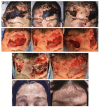
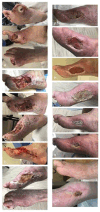
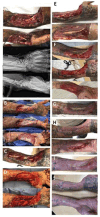


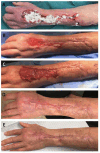



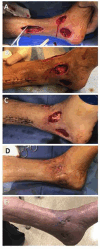

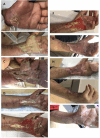

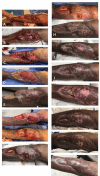
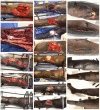

References
-
- Park H, Copeland C, Henry S, Barbul A. Complex wounds and their management. Surg Clin North Am. Dec 2010;90(6):1181-1194. doi:10.1016/j.suc.2010.08.001 10.1016/j.suc.2010.08.001 - DOI - DOI - PubMed
-
- Lee CK, Hansen SL. Management of acute wounds. Surg Clin North Am. Jun 2009;89(3):659-676. doi:10.1016/j.suc.2009.03.005 10.1016/j.suc.2009.03.005 - DOI - DOI - PubMed
-
- Beyene RT, Derryberry SL, Barbul A. The effect of comorbidities on wound healing. Surg Clin North Am. 2020. Aug;100(4):695-705. doi:https://doi.org/10.1016/j.suc.2020.05.002 10.1016/j.suc.2020.05.002 - DOI - DOI - PubMed
-
- Janis JE, Kwon RK, Attinger CE. The new reconstructive ladder: modifications to the traditional model. Plast Reconstr Surg. Jan 2011;127 Suppl 1:205s-212s. doi:10.1097/PRS.0b013e318201271c 10.1097/PRS.0b013e318201271c - DOI - DOI - PubMed
-
- Boyce DE, Shokrollahi K. Reconstructive surgery. BMJ. 2006;332(7543):710-712. doi:10.1136/bmj.332.7543.710 10.1136/bmj.332.7543.710 - DOI - DOI - PMC - PubMed
Publication types
LinkOut - more resources
Full Text Sources
